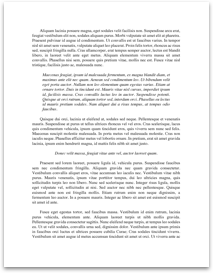Eco 561 Final Exam Solution
Submitted by: Submitted by TammyTaylor2
Views: 10
Words: 605
Pages: 3
Category: English Composition
Date Submitted: 11/21/2015 01:28 AM
ECO 561 Final Exam Solution
http://www.homeworkwarehouse.com/downloads/eco-561-final-exam-solution/
ECO 561 Final Exam Solution
1). If a firm in a purely competitive industry is confronted with an equilibrium price of $5, its marginal revenue:
2). A firm that is motivated by self interest should:
3). If price is above the equilibrium level, competition among sellers to reduce the resulting:
4). Camille’s Creations and Julia’s Jewels both sell beads in a competitive market. If at the market price of $5, both are running out of beads to sell (they can’t keep up with the quantity demanded at that price), then we would expect both Camille’s and Julia’s to:
5). Since their introduction, prices of DVD players have fallen and the quantity purchased has increased. This statement:
6). In a market economy the distribution of output will be determined primarily by:
7). In a competitive market economy firms will select the least-cost production technique because:
8). Suppose that the price of peanuts falls from $3 to $2 per bushel and that, as a result, the total revenue received by peanut farmers changes from $16 to $14 billion. Thus:
9). If technology dictates that labor and capital must be used in fixed proportions, an increase in the price of capital will cause a firm to use:
10). In which of the following industries are economies of scale exhausted at relatively low levels of output?
11). If a firm decides to produce no output in the short run, its costs will be:
12). Which of the following represents a long-run adjustment?
13). Paying an above-equilibrium wage rate might reduce unit labor costs by:
14). A firm can hire six workers at a wage rate of $8 per hour but must pay $9 per hour to all of its employees to attract a seventh worker. The marginal wage cost of the seventh worker is:
15). Price exceeds marginal revenue for the pure monopolist because the:
16). Oligopoly is difficult to analyze primarily because:
17). A competitive firm will maximize...
More like this
- Final Exam Eco 372
- Eco 550 Wk 11 Final Exam - All Possible Questions
- Eco 561 Week 4 Bp
- Bis 219 Final Exam – a
- Final Exam
- Corporate Finance- Final Exam Review
- Finance 515 Final Exam
- Hrm594 Strategic Staffing - Complete Course And Final Exam
- Proj410 (Contract And Procurement )All Weeks Discussions , Case Studies, Midterm And Final Exams
- Bus 520 Complete - All Assignments, Midterm And Final Exam
